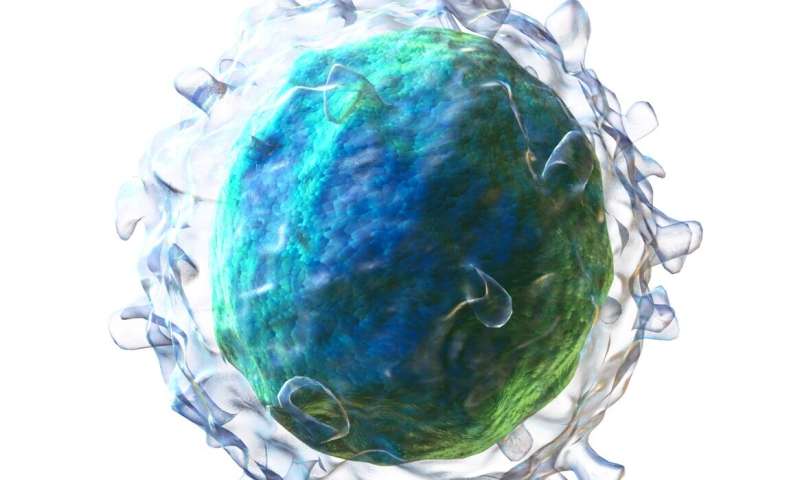A new regulator of B cell development

Interleukin-33 (IL-33) drives inflammatory responses in allergic and nonallergic disease. Epithelial cells in the lungs, gastrointestinal tract and elsewhere release IL-33, which activates the ST2 receptor on immune cell targets.
In addition to the ST2-binding domain, IL-33 contains a nuclear chromatin-binding domain, suggesting that it may act inside cells that produce it. However, a cell-intrinsic role for IL-33 has not been established.
Matthew Stier, MD, Ph.D., Stokes Peebles, MD, and colleagues have now identified IL-33 expression, but not ST2 receptor expression, in developing B cells in the bone marrow (mature B cells produce antibodies). They demonstrated that IL-33 deficiency resulted in increased numbers of developing B cells.
The researchers detected IL-33 during early B cell development in humans and found reduced IL-33 expression in B cell chronic lymphocytic leukemia samples compared to healthy controls.
The findings reported in the Sept. 15 Journal of Immunology establish a cell-intrinsic role for IL-33 in early B cell development that is independent of the ST2 receptor.
More information: Matthew T. Stier et al. IL-33 Is a Cell-Intrinsic Regulator of Fitness during Early B Cell Development, The Journal of Immunology (2019). DOI: 10.4049/jimmunol.1900408


















